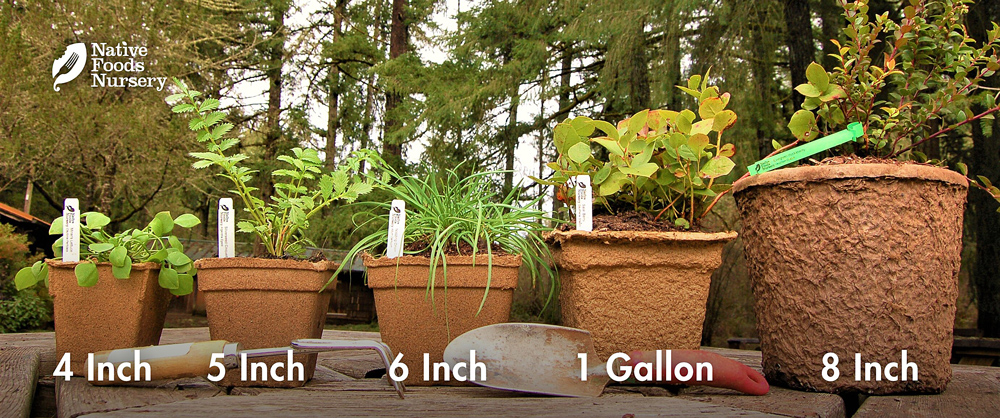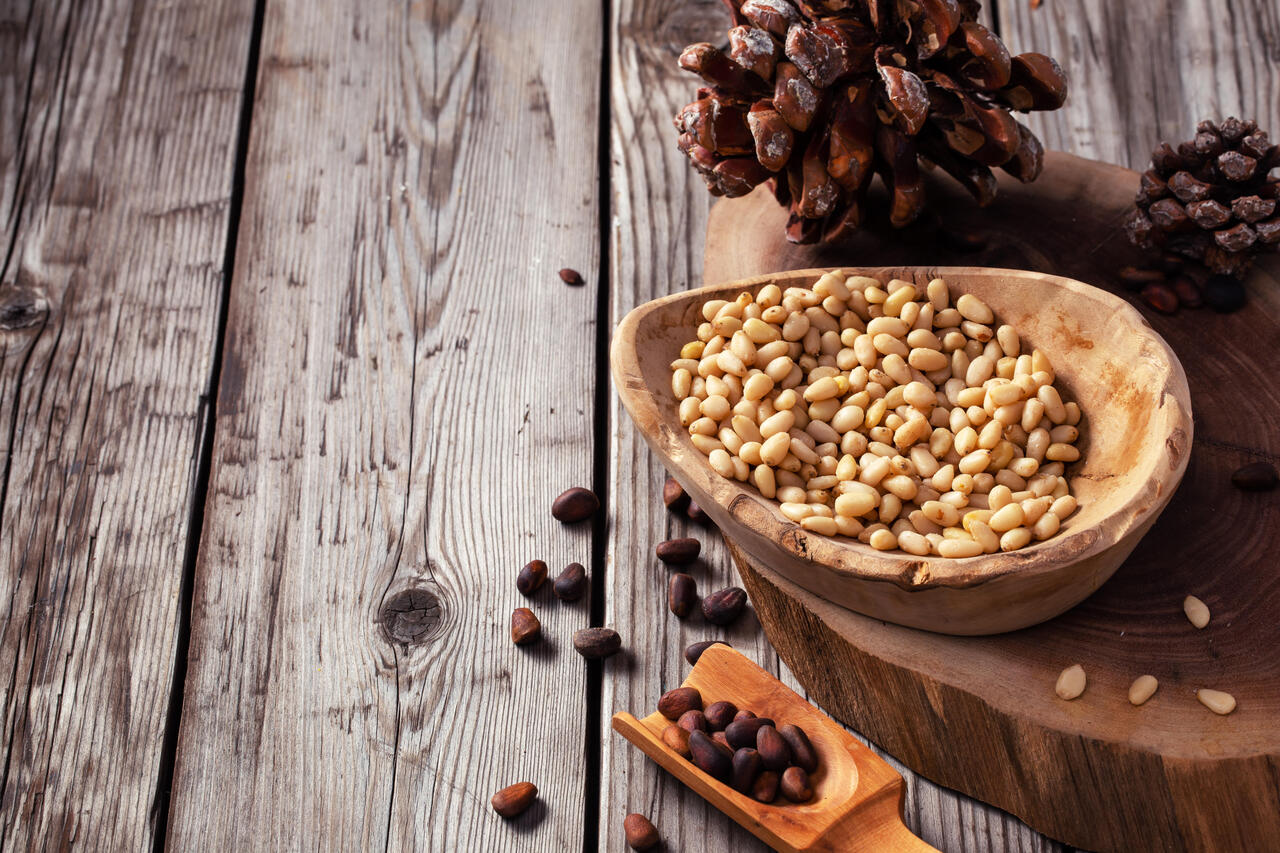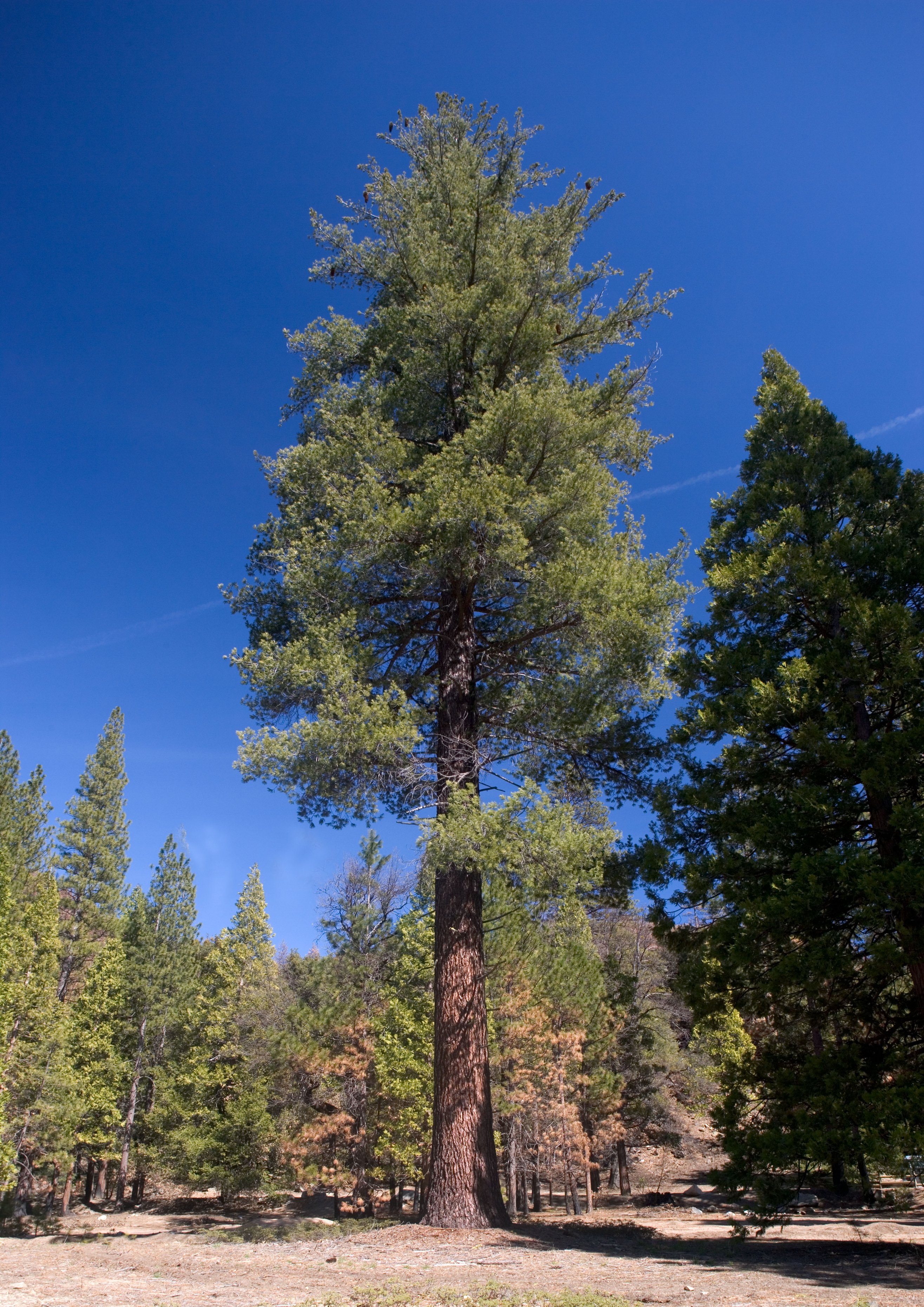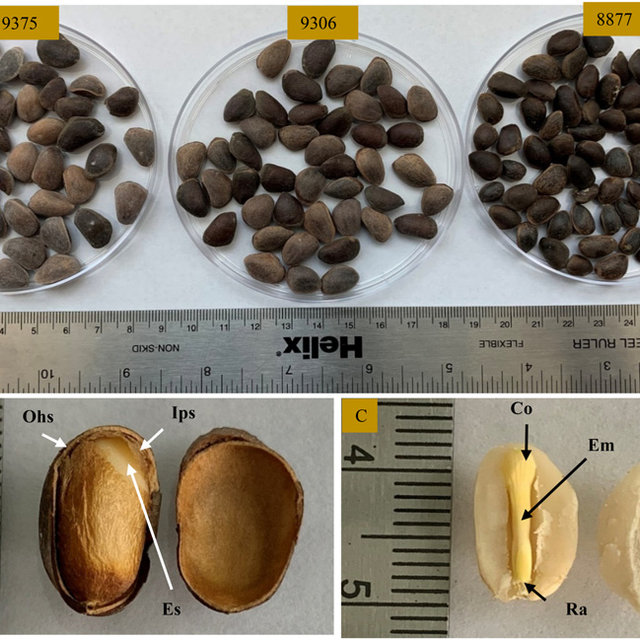Sugar Pine
- Current Stock:
- 0
- Other Names:
- Sugarcone Pine, Lambert's Pine, Big-cone Pine, Sugar Tree, Sweet Pine, Natele (Umpqua)
- Latin Name:
- Pinus lambertiana
The tallest of all pines and a legend of the Western mountains, Sugar Pine bears sweet, oily, highly edible seeds and those spectacular extra-long cones that captivate every passerby. In food forests it complements pinyons and gray pine—offering excellent nut quality with the stature of a grand shade tree [1][2][6]. A climate-change-ready PNW permaculture all-star!
Notes: Seed source - Southern Oregon. See comparison table of all our nut pines HERE. If you're ordering more than 20 nut trees for restoration, please contact us first (we can grow as many as you'd like, but it may take a season).
Edible Uses
Sugar Pine seeds are sweet, rich, and pleasantly oily, excellent raw, roasted, or ground; they’ve long been gathered as a mountain staple food and compare favorably in flavor with pinyon nuts (though cones are higher and harvests more intermittent) [2][5][9].
The tree’s name comes from its sweet, amber-colored resin, which is eaten raw or dissolved in water as a natural candy and mild medicinal tonic. In a pinch, thin shavings of the inner bark (spring cambium) can be eaten fresh or lightly roasted; it can also be dried and pounded to extend flours—take only small vertical strips so you don’t girdle the tree [5][9].
Ornamental Qualities
Graceful, upswept branches; needles in fives with a soft blue-green cast; and iconic very long cones make Sugar Pine a showstopper in large landscapes [1][2]. For drought-savvy, habitat-rich plantings, pair with other Native Foods Nursery species like Oregon White Oak, California Black Oak, Serviceberry, Ceanothus (nitrogen-fixer), and native bunchgrasses to create an open, climate-resilient savanna edge [3][6][10].
Environment and Culture
Native to the Sierra Nevada, southern Cascades, and coastal ranges of CA–OR, Sugar Pine anchors montane mixed-conifer forests with deep winter moisture and dry summers [1][2]. It’s susceptible to white pine blister rust (Cronartium ribicola), but rust-tolerant selections and silvicultural practices (airflow, site choice) support establishment and longevity [4][6][7].
In the Pacific Northwest, Sugar Pine grows very well in dry foothills, rocky uplands, and rain-shadow slopes, but struggles in wet, heavy, lowland soils.
It’s a worthy climate-resilient species for long-term restoration and nut forestry—provided you give it drainage and space.
Indigenous communities continue to harvest and tend pine nuts as living food traditions, sustaining relationships with place and with these trees today. Honoring Indigenous stewardship is essential; see our Charitable Giving page for ways to support ongoing cultural and ecological work [5][9].
Harvest, Care, and Preparation
Choose full sun and excellent drainage (benches, mounds, or rocky slopes mimic mountain soils). Water regularly for 2–3 years; reduce thereafter—Sugar Pine is drought-tolerant once established in suitable climates [2][6]. Minimal pruning beyond structural training. Cones ripen late summer to fall; many drop naturally—collect promptly (wildlife competition is intense). Expect longer juvenile periods than pinyons; nut production typically begins ~20–30 years from planting in good sites [2][6][8].
Attributes
- Native Range: CA–OR mountains (Sierra Nevada, S. Cascades, coastal ranges) [1][2][3]
- USDA Zones: 5–8 (best in montane, winter-moist summer-dry climates) [2][6]
- Ease of Care: Moderate (easy after establishment; needs good drainage) [2][6]
- Deer Resistance: Moderate (protect young trees) [6]
- Light Requirements: Full sun [2]
- Soil Type: Well-drained, rocky/loamy mountain soils; avoid waterlogging [2][6]
- Water Requirements: Moderate during establishment, then low; drought-tolerant in suitable sites [2][6]
- Pollination: Wind-pollinated; monoecious (male/female cones on same tree) [2]
- Bearing Age: ~20–30 years in good sites (later than pinyons) [2][6][8]
- Size at Maturity: 120–200+ ft; broad crown with age [1][2]
- Plant Spacing: 25–40+ ft (allow for crown spread and roots) [6]
- Bloom/Pollen Time: Late spring–early summer (region dependent) [2]
- Harvest Time: Late summer–fall as cones mature/drop [2][6]
- Notes: Susceptible to white pine blister rust; choose airy sites, monitor health; consider rust-tolerant stock where available [4][7
References
[1] USDA PLANTS Database — Pinus lambertiana (taxonomy, range, morphology).
[2] Flora of North America — P. lambertiana treatment (habitat, characters, ecology).
[3] Jepson eFlora (California) — distribution, habitat notes.
[4] USFS Forest Health / White Pine Blister Rust — host susceptibility & management context.
[5] Moerman, Native American Ethnobotany — food uses of Sugar Pine (seeds, pitch, inner bark).
[6] USFS Silvics/Plant Guides — growth, ecology, silviculture, drought notes.
[7] Rust-resistance literature (USFS/PNW Station & program reports) — breeding/tolerance summaries.
[8] Native Plant Network / Extension — cultivation guidance; bearing timelines in plantings.
[9] Turner & other ethnobotany works — Indigenous food use & tending.
[10] Pojar & MacKinnon, Plants of the Pacific Northwest Coast — community associates & natural history.
Pot Sizing Guide

Planting Guide: Sugar Pine (Pinus lambertiana)
Tip: Think “mountain edge.” Prioritize excellent drainage, full sun, and a roomy site; plant young stock to minimize transplant shock.
Choosing a Site
Light: Full sun.
Soil: Well-drained, rocky or loamy soils; avoid perched water. Mound or berm heavy ground.
Space: 25–40+ ft from structures/trees; allow for crown and roots.
Planting Steps
Plant in fall (best) or early spring. Handle roots gently—Sugar Pine dislikes root disturbance.
Set at prior soil line; backfill lightly; water to settle. Do not over-compact.
Mulch 2–3 in. with coarse wood chips, keeping mulch a few inches off the trunk.
Watering & Care
Establishment (years 1–3): Deep water every 7–14 days in dry periods; let soil breathe between soakings.
After establishment: In suitable climates, minimal irrigation; occasional deep soaks during extreme drought.
Pruning: Minimal—remove only damaged/crossing branches; preserve natural form.
Feeding: Generally unnecessary; a light spring compost ring is sufficient.
Protection
Wildlife: Protect young trunks from rodents/deer with guards and browse protection.
Disease: Site for airflow; avoid chronically wet soils. In blister-rust regions, monitor health and keep crown open.
Heat/Wind: Mulch to moderate soil temps; stake only if essential and remove early.
Harvest Basics
Timeline: First cones commonly 20–30 years after planting (site dependent).
Season: Late summer–fall; collect dropped cones promptly (wildlife competition is intense).
Use: Seeds (pine nuts) raw or roasted; cones are large and sticky—use gloves when handling.
Companions & Guilds
For resilient edible guilds, combine Sugar Pine with Oregon White Oak, Serviceberry, Manzanita, Ceanothus (nitrogen-fixer), and native bunchgrasses for a low-water, wildlife-rich savanna edge.
Indigenous communities continue to harvest and tend pine nuts as living food traditions. We honor these relationships—learn more on our Charitable Giving page.










